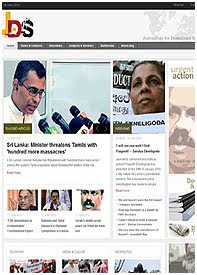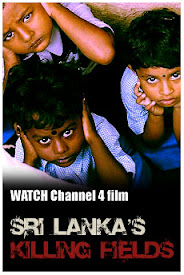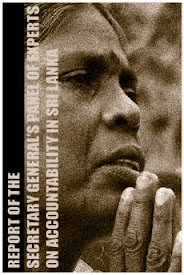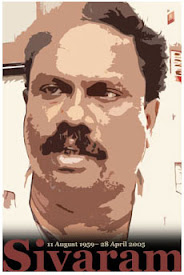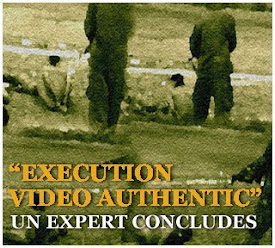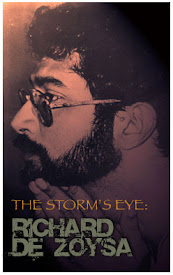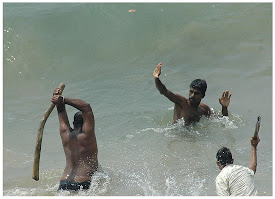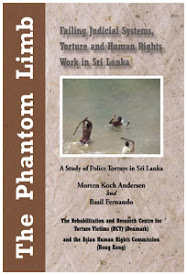
BBC News
.............................................................................................................................................................................................
The Roman Catholic Bishop of Mannar and 30 priests wrote to the UN Human Rights Council calling for an inquiry into the legacy of Sri Lanka's civil war.
But Sri Lanka's Buddhist nationalist JHU party accused the bishop of sympathising with separatist rebels.
Correspondents say his comments have also led to a rift within the church.
The bishop of the northern diocese of Mannar, Rayappu Joseph, supported by 30 priests, signed a letter sharply critical of the Sri Lankan authorities.
Apart from calling for an independent international inquiry on the legacy of the war and the need for truth and accountability, the letter condemned what it described as continuing human rights abuses.
The signatories also blamed the government for recent abductions of human rights workers and "vicious hate campaigns" against its opponents.
It has prompted the ire of the strongly Buddhist nationalist JHU or National Heritage Party, which told the BBC that the government should prosecute the bishop.
Church 'rift'?
The bishop's comments also contrast graphically with those of the top Catholic hierarchy in the country. The BBC's Charles Haviland in Colombo says the differences have laid bare what appears to be a split in the church in Sri Lanka.
A statement by Cardinal Malcolm Ranjith, who heads the church in Sri Lanka, accused Western countries of meddling in Sri Lanka's sovereignty by planning to table a resolution on Sri Lanka at the Human Rights Council, which is currently convening in Geneva.
It said this was "an insult to the intelligence" of Sri Lankans.
The diametrically opposed messages from senior Catholics here point to a rift in the church, even though the cardinal, then an archbishop, worked with the same Bishop of Mannar a decade ago to try to mediate between the government and the Tamil Tigers, our correspondent says.
The church also made a joint presentation to the government-appointed war commission, noting that a priest was among many people who unaccountably disappeared on crossing into government territory as the war ended.
But activists say Cardinal Ranjith should be more vocal on human rights problems.
Catholics straddle the ethnic divide in Sri Lanka and among the church's members are several ministers and the wife of the President.
© BBC News
Wednesday, March 07, 2012
Sri Lanka row over Catholic letter on human rights
Wednesday, March 07, 2012
Five ex-LTTE members abducted since February 27

Tamil Net
.............................................................................................................................................................................................
On 27 February, two armed men, who came in a vehicle, asked for Mr. Muthaiah Subramaniyam and took him in their vehicle saying that he was being taken for an inquiry and that he would be released. The abduction took place around 9:00 p.m. in Ki'linochchi.
He was living with his family since 10 June, 2010.
3 more abductions have been reported in Ki'linochchi and Mullaiththeevu districts since 27 February.
Another person has been abducted in I'nuvil, Jaffna.
The families of abductees didn't want to reveal the details or names fearing for the safety of the victims.
© Tamil Net
Wednesday, March 07, 2012
Ideology behind military rape in ‘United Sri Lanka’

Photo courtesy: Dinidu de Alwis
By R.M.Karthick | Counter Currents
.............................................................................................................................................................................................
But what is the rationale behind these ‘excesses’? Is there an ideology behind this or is it just yet another crime committed during a counterinsurgency war?
Those who followed what happened after the release of the documentary would be familiar with the crass sexist, gender-insensitive remarks made by Defence secretary Gotabaya Rajapaksa on one of the female war witnesses who appeared in the video. While observers looked at it as the rant of a paranoid, what was missed was that same sentiments, if not worse, were expressed by the Singapore based Sri Lankan ‘counterinsurgency expert’ Rohan Gunaratna in one of his lectures on ‘Defeating the LTTE on foreign soil’ recently.[i] The gentleman, who has a few books printed in respectable publishing houses to his credit, instead of addressing the allegations of war-crimes and genocide placed by some prominent Eelam Tamil women war witnesses, was more interested in commenting about their looks and personal lives. An intimidation tactic? Or does an ideology lie behind this?
To paraphrase Mao, the best weapons the oppressed could use are framed by the enemy. Very well then.
The Sri Lankan liberal website Groundviews had a few days back published an article titled ‘History after the war: Challenges for Post War Reconciliation’.[ii] The author Dr. Dewasiri, a Sri Lankan academic, raises some interesting points regarding the dominant ideology in the ‘united island’.
1. In the Sinhala-Buddhist ideology the unitariness of Sri Lanka is not based on modern premises, but on a belief that this has been so for ages.
2. The ‘Tamil North’ in the island is a place to be conquered and occupied.
3. The military defeat of the LTTE, which had put a checkmate to this Sinhala conquest ever since its inception and the concomitant Sri Lankan military presence in the Tamil homelands alone was not enough. Tamils had to be de-nationalized and the Sinhala-Buddhist presence had to be increased in the North and East of the island.
That the author fails to deduce and state from this the genocidal intent of the Sinhala apparatus leading to Mullivaikaal, the protracted nature of the genocide of the Eelam Tamils aimed to culminate at a moment of complete Sinhalization, and the ethico-political need to support the demand for Tamil Eelam, is of course not his fault. A liberal academic, this is as far as he can go.
But his admission of the desire of Sinhala nationalist ideology for the conquest of Tamil lands gives us hints to the problem at hand.
Classic aggressive colonization of a land always imagines and equates conquest of land with control of that land’s women. While in action it usually works out in different forms - enslavement, rape, prostitution etc. in the level of discourse, it works as desire for seduction and possession of the native. From Said on to Chinua Achebe, a variety of postcolonial scholars have written on such ideological functions of colonial literary canons. The narration of ‘white man seducing and possessing the native and living together happily ever after’ has always been accompanied in real life by a most brutal pillage of the land of the natives, which it masks in romance.
Consider this personal narrative of a Sinhala gentleman married to a Tamil woman published on Groundviews.[iii] At surface level, it seems to ooze with sexuality and sentimentality. But as one goes towards the end, the theme is clear. Through an idealization of his relationship with his partner, the idea of ‘they’ existing as a distinct nation is dismissed and only ‘us’ is upheld as ideal. There is no guilt on the fact that over 100,000 of the nation of his ‘Other’ was killed fighting for a separate state by the government he pays taxes to. Only a frustration that despite her willingness to be as Sri Lankan as the Sinhalese, there is still discrimination. The desire for his partner becomes transposed through his narration onto a desire for a united Sri Lanka, which incidentally practices structural genocide against the Other nation.
The cynical multiculturalist argument – ‘Oh, they are not so much different from US after all. And they try to be like US too. So why cant we all just be US?’ To use an argument that Zizek used in his dissection of Avatar, beneath the politically correct words of this narrator, an array of brutal racist motifs exist. For his plea is only for those who are willing to be part of ‘us’. An Isaipriya, who would have never been part of ‘them’, was raped and killed. Along with hundreds like her.
Then, the logic of the soldier who believes that by raping a Tamil woman he is inflicting a blow on Tamil nation/culture is precisely the practical reflection of the logic of the Sinhala male who believes that by his wooing of the Tamil woman, the unitary state of Sri Lanka is possible/preserved.
(Does this mean that love cannot exist between individuals of the two nations? The author would never suggest that. But, if this ‘love’ translates into a discourse, a narration that justifies/upholds/masks an oppressive structure, it ceases to be an emotion. It becomes political. Moreover, in the time of Genocide even love, especially love, is a political act.)
A more obvious example would be the Sri Lankan High Commissioner for Australia, Admiral Samarasinge (himself an individual accused of war crimes) stating to Australian parliamentarians about the success of reconciliation in the island by giving the case of a “recent marriage which had taken place between a Sri Lankan soldier and a former LTTE combatant.”[iv] Meaning is this. The wedding of a Sinhala soldier, emblematic of all that is ‘good’ in Sri Lankan society, to a Tamil Tiger combatant, emblematic of all that is ‘evil’ in Tamil society, shows that the island is finally one. A symbolic conquest par excellence of the hated/desired Other.
Frantz Fanon in his brilliant analysis of the role of Algerian women in resistance in the article ‘Algeria Unveiled’ notes how the colonizer viewed the veil as an impediment to his penetrative gaze, his desire to possess the feminine body of the colonized. “The European faced with an Algerian woman wants to see. He reacts in an aggressive way before the limitation of his perception. Frustration and aggressiveness, here too, evolve apace.”
The ‘veil’ in this case is, of course, the Tiger uniform. The female cadre is a revolutionary subject militantly fighting the objectification of the Tamil feminine body by Sinhala patriarchy, creating history on the field through herself, by virtue of her uniform and her weapon. Considering that the women combatant of the LTTE often outshined their male comrades in inflicting crushing defeats on the Lankan army, her body and her uniform were symbolic of castration of the patriarch-par-excellence.
To the army man, the body of the female combatant and the uniform that veils it is unchartered territory, a mysterious locus of his neuropathological desire and hatred, a symbolic challenge to his masculinity. So when the Tigers were militarily defeated, he had to unveil the inaccessible, he had to prove his masculine credentials; he had to reassert the supremacy of Sinhala patriarchy. At the risk of sounding cold, the sexual abuse of Tamil women cadres was expected. The very nature of Sinhala militarist-colonization of Tamil territory seeks to feminize the Tamil body-politic and penetrate it. The rape of the women who resist this penetration at both subjective and symbolic levels then needs to be seen not as case of individual pathology alone, but also as a systemic necessity.
‘Taraki’ Sivaram, the iconic senior editor of TamilNet who was assassinated by Sri Lanka, had observed that “One of the things that a regime of terror expects is the total submission of women to the regime of terror. Basically the regime of terror expects women to be sex slaves.” Submission needn’t be rape alone, though the threat of rape is always there. It needs simply to be the acceptance of the authority (legal, extra-legal, social) of the Sinhala patriarch and his symbolic figure. Dr. Dewasiri’s article talks about Sinhala-Buddhist ‘pilgrims’ flocking to Jaffna and about this being a politico-ideological act. But it has no mention of the proliferation of brothels in the city and the general profile of its customers. Nor does it mention Sri Lankan brokers from the south trafficking economically disadvantaged Tamil women from their homeland to other parts of the island, and sometimes, even outside the island. Nor the fact some of the commanders of the occupying army have advised the soldiers to ‘fall in love and marry’ the women, if possible that is.
To sum it up, sexual violence/attention that Eelam Tamil women face in their homelands is not an act of aberration committed by the Sri Lankan armed forces occupying Tamil Eelam, but is an inherent necessity of a neanderthalic Sinhala nationalism that wishes complete conquest of Tamil Eelam’s geography and concurrently views the body of the Tamil woman as a landscape of its desire, as an object if possessed will ensure the state’s unitary structure.
It is then obvious, as quite some Eelam Tamil feminists have pointed out, that the liberation of Eelam Tamil women is impossible without the liberation and complete decolonization of Tamil Eelam.
Women’s Day wishes.
[i] http://www.youtube.com/watch?v=gCpARMjv6AU&feature=youtu.be
[ii] http://groundviews.org/2012/02/25/history-after-the-war-challenges-for-post-war-reconciliation/
[iii] http://groundviews.org/2010/05/22/living-with-the-other-in-post-war-sri-lanka/
[iv] http://www.dailynews.lk/2012/03/02/news32.asp
Karthick RM is a research scholar at the University of Essex, UK
© Counter Currents
This site is best viewed with firefox

Search
Is this evidence of 'war crimes' in Sri Lanka?
Archive
- ► 2010 (1312)
- ► 2011 (687)
Links
- Reporters Sans Frontières
- Media Legal Defence Initiative
- International Press Institute
- International News Safety Institute
- International Media Support
- International Freedom of Expression eXchange
- International Federation of Journalists
- Committee to Protect Journalists
- Asian Human Rights Commission
- Amnesty International
